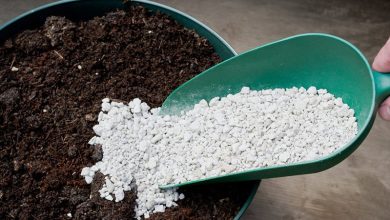How to plant taro


Colocasia esculenta
The taro is also known as yam (in southeastern Brazil and in the Azores archipelago), yam (in northeastern Brazil), elephant ear, coconut yam or yam-dos-azores.
There are cultivars classified as «tame» or «brave» according to the concentration of proteases (enzymes) and raffids (calcium oxalate crystals) in the plant. Gentle cultivars have a lower concentration of proteases and raffids, being the most suitable for use in human food. Wild cultivars have a higher concentration of raffids and proteases, being more used as an ornamental plant or in feeding animals, after cooking or fermentation (silage).
Contrary to what some people believe, it is generally not possible to distinguish tame cultivars from wild cultivars by the color of the petioles and leaf limbs. There are over 200 taro cultivars, part of which are grown as food and part as an ornamental plant.

Climate
Taro grows best in hot, humid weather, with the ideal temperature for cultivation being 25 ° C to 35 ° C. These plants do not support low temperatures.
Brightness
The taro can be grown in sunny locations or in partial shade.

Ground
Cultivate in well-drained, fertile soil, rich in organic matter, with a pH between 5.5 and 6.5. Avoid compacted and very clayey soils.
Some taro cultivars of the subspecies Colocasia esculenta var. esculenta are grown in places flooded with running water or at the edge of water courses. Stagnant water sites are not suitable, as corms can rot more easily in these conditions.
Irrigation
Irrigate in order to keep the soil always moist. Adult plants are resistant to drought, but do not grow as long as water is lacking.

Planting
Planting is usually done with shoots, small lateral corms that appear close to the main, which can also be used for planting, whole or cut into large pieces. They are planted 6 to 10 cm deep, with a spacing of 70 cm to 1 m between plants or 1 m between rows and 20 to 30 cm between plants, according to the size of the cultivar and the local conditions of cultivation .
Start planting from sprouts, corms or seedlings of good quality cultivars, obtained from reliable producers or from agronomic research institutes. Do not use wild plants, as they can be quite toxic.
Cultivation
Remove invasive plants that are competing for nutrients and resources, especially in the first three months of planting.

Harvest
Harvesting the corns of the taro can be done 7 to 9 months after planting, depending on the cultivar and cultivation conditions. The corms must be carefully dug up, trying to avoid injuries that can greatly accelerate their deterioration.
Leaves and their petioles are also edible after cooking, although they are less used than corms. And even inflorescences are used as food in some places, particularly in Southeast Asia and Oceania. Both leaves, corms and inflorescences must be well cooked or roasted (from a few minutes to many hours, depending on the cultivar) before consumption to eliminate proteases (enzymes that degrade proteins) and raffids (calcium oxalate crystals in the form needles). The use of baking soda or acidic substances such as vinegar, tamarind juice or lemon in the preparation also help to make the taro more palatable. However, people with kidney problems should avoid consuming taro and other plants that contain calcium oxalate. Few cultivars have leaves,
The sap of the plant can cause irritation to the skin, eyes and mucous membranes, so the harvest should be done carefully and with the use of gloves.

Other species also known as taro
Other plants in the Araceae family are also called taro or elephant ear, including among the most common:

Colocasia gigantea – sometimes called giant yam, its corms are not used as food. It is mainly the leaf stalks (petioles) that are consumed. This plant is believed to be the result of the cross between C. esculenta and Alocasia macrorrhizos .

Alocasia macrorrhizos – also called giant elephant ear and giant alocasia, its leaves point upwards or remain almost horizontal. Edible only after a long cooking period.

Cyrtosperma merkusii – practically grown only in Oceania, it is planted in flooded places. It is the largest plant called taro, reaching 4 or 5 meters in height and having corms of up to 80 kg, which are also edible only after a long cooking period.
Xanthosoma sagittifolium – better known as taioba, has leaves similar to the leaves of plants of the genera Alocasia and Cyrtosperma, but can be distinguished by the position of its leaves, which point downwards. Read more about taioba in the article how to plant taioba .

![Photo of Plant Artichokes: The Most Efficient Way in [12 Steps]](https://www.complete-gardening.com/wp-content/uploads/2022/08/plant-artichokes-the-most-efficient-way-in-12-steps-390x220.png)
![Photo of How to Plant Pistachios Step by Step: [Guide + Images]](https://www.complete-gardening.com/wp-content/uploads/2022/08/how-to-plant-pistachios-step-by-step-guide-images-390x220.jpg)

![Photo of Prune the Garden: [Importance, Time, Tools, Considerations and Steps]](https://www.complete-gardening.com/wp-content/uploads/2022/08/prune-the-garden-importance-time-tools-considerations-and-steps-390x220.jpg)